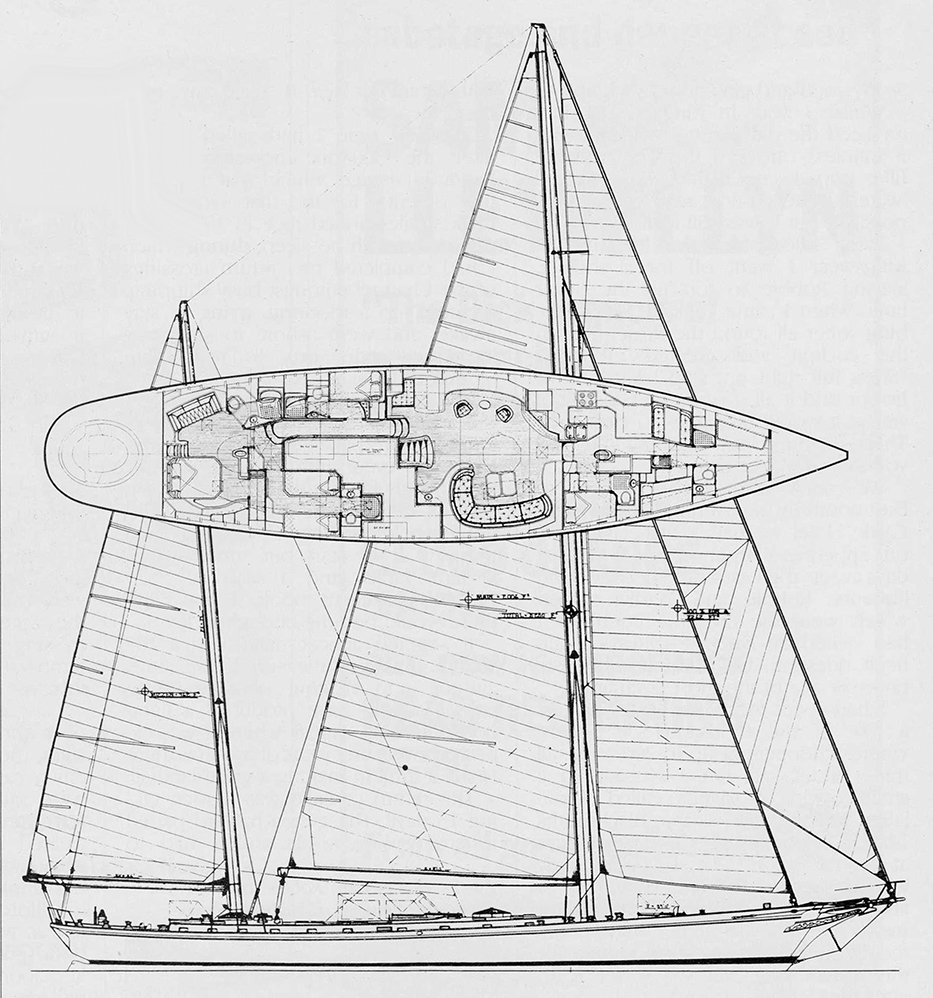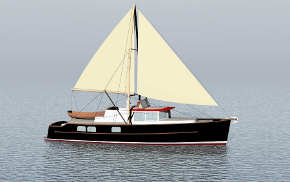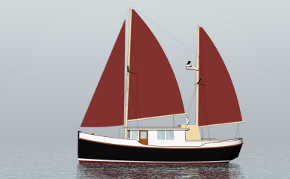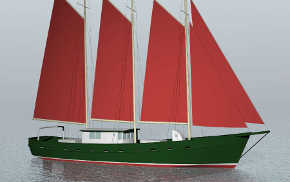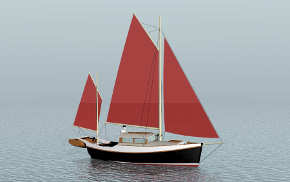Drawing Signe
I started drawing Signe in January of 1987, the day I started work in Bruce King’s office. Years later I counted through our drawing file and I think there were over 80 sheets in the set. Joe Artese (interior design) made 3-4, Bruce made one, I did the rest. It took me about three years, but I worked on other projects as well. My first day with Bruce I drew the first sailplan for Signe, at 1/4″ scale. I was about done at quitting time and Bruce told me to slow down and fussed about the stem shape, and I realized accuracy was more important here than speed.
The drawings were all made in pencil on heavy velum paper, except the hull lines drawing done on mylar. The hull lines and major construction were all done at 1/2″ scale, so these drawings were over 5′ long. Many drawings were larger, there were dozens of full size detail drawings of hardware and fittings. Everything was custom made for the boat and had to be drawn out. Bruce would scratch a few numbers on an old envelope and say, “make it half-inch”, or “make the pin three-inch”. Once the drawing was roughed out we would look it over and adjust the proportions of bits. It was a very graphic style of design and engineering based on what had worked in the past. Everything was overbuilt.
I only used three pencil weights, 2, 3, and 4-H. Lettering and shading was all done with the soft 2-H, the drawing was done with 3-H, and 4 was reserved for the hull lines and various guide lines on the back of the larger drawings. Today I find the lead composition so changed that the numbers no longer make sense. But I rarely draw by hand anymore.
There is a vast difference in drawing by hand vs in the computer. A hand drawing in it’s entirety is in view all the time and every additional line is scaled against the whole drawing. Every thing relates instantly, you lean back and the new bit fits, or not. In the computer I almost never see the entire drawing because as you zoom out detail disappears….frustrating. This slowed me down for years trying to adapt, I’ll never be as fast as someone who has only ever drawn in a computer program.
As I said above there were dozens of full sized drawings for the Signe design, and drawing things full size gave me a feel for how big things should be. Signe was my training ground. There were full sized drawings of the steering wheel, the steering gear, the quadrant, the rudder bearings, the turning blocks, either end of the wooden booms, the various chainplates, the dolphin striker, the whisker stay spreaders, whisker stay chainplates, the cranse iron, the bowsprit, the bowsprit mount, all the different hatches and skylights, and a whole bunch for the centerboard and it’s mechanism.
I made these presentation drawings of Signe’s interior because Bruce wanted them for publication free of dimensions and details that were all over Joe’s drawings. It’s hard to believe that was 27 years ago.
Signe Specifications
LOA = 100’0″
LWL = 87’6″
Beam = 22’0″
Draft = 8’0″ Board up
22’0″ Board down
Displacement = 230,000 pounds (as designed)
Sail Area = 5,230 sq ft.


-
External Links
- Sorry, no links have been posted
